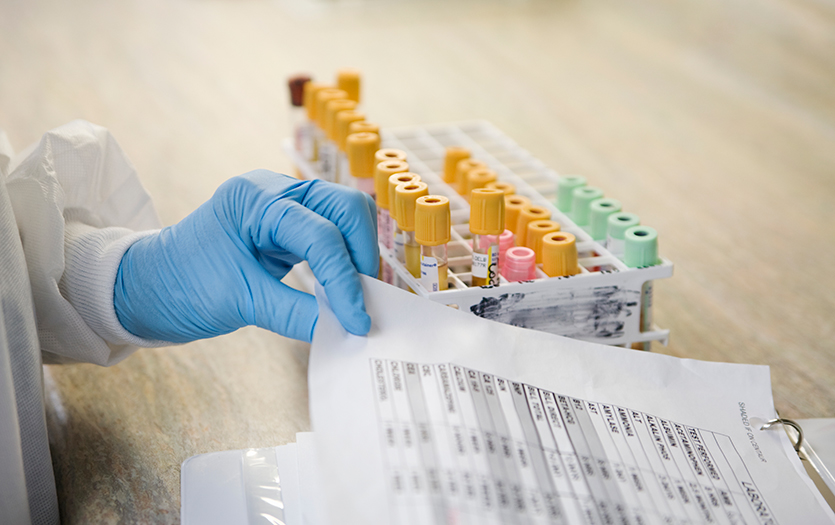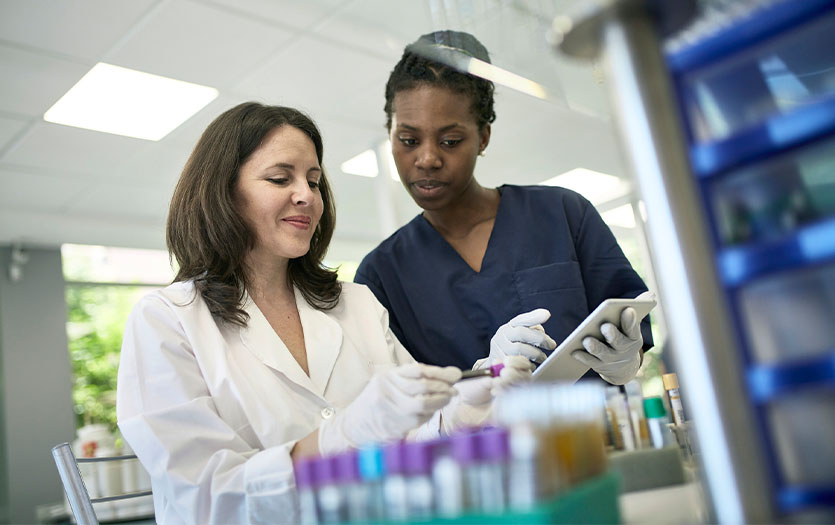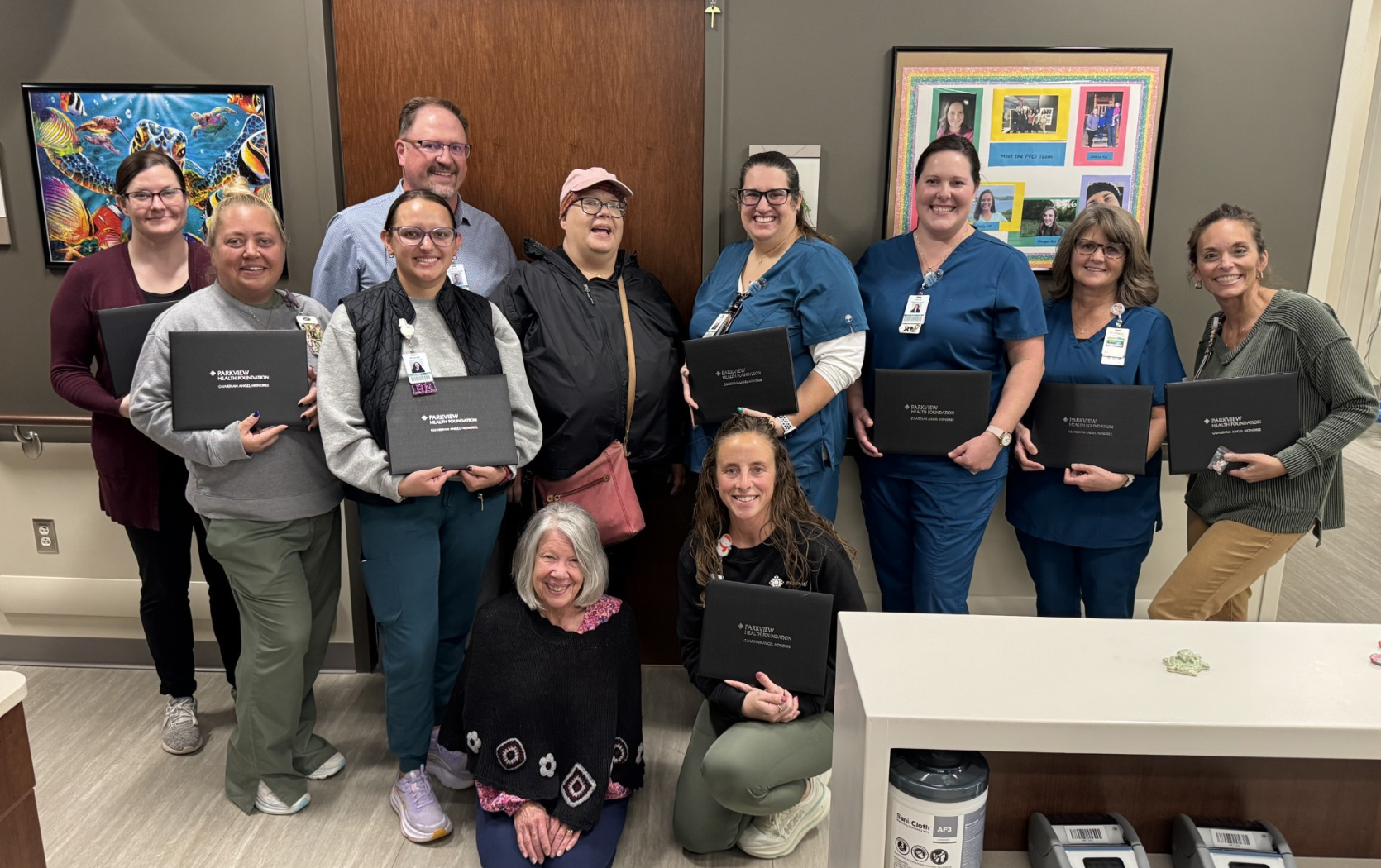
This post was written by Lisa Daniel, MLS (ASCP), BB, Director of Corporate Lab Services, Parkview Health
When your blood is collected, you're often told it's being sent to the lab, but what does that mean? For those who have ever been curious about this procedure, this post explores the process a blood sample undergoes, from when it's drawn to when the results are ready.
Collection
The laboratory staff member you are likely most familiar with is the phlebotomist. These specialists are trained in the blood collection process. They are responsible for determining which blood tubes to collect, performing the collection procedure, and properly identifying the tubes with information such as your name and date of birth.
Transport
Keeping your blood sample within a specific temperature range during transport is essential for an accurate analysis. Depending on the test, samples may require ambient, refrigerated or frozen transport. This is accomplished using coolers, ice packs and dry ice.
The location where your blood is collected determines how it travels to the clinical laboratory. A nurse, patient care tech or phlebotomist may walk blood samples to the lab within the hospital. A pneumatic tube system is an alternative method for delivering samples. It functions similarly to what you might utilize at a bank's drive-thru and allows for relatively quick transport.
For samples collected outside the hospital, couriers pick them up and drive them to the clinical laboratory following a set schedule. Transport times vary based on the schedule and the distance to the lab, but your sample typically arrives within 12 hours.
Arrival at the laboratory
The lab is made up of several different areas or departments. When your blood arrives, it can be sent to one of the following:
-
Chemistry: Measures proteins, enzymes and chemicals in the blood. Common tests performed in this area include glucose, cholesterol and thyroid testing.
-
Hematology: This department looks at the red and white blood cells that make up blood. Common testing in this area includes a complete blood count (CBC).
-
Immunology: This department examines blood antibodies that may indicate infectious or autoimmune diseases. Common tests performed in this area include those for anti-nuclear antibody (ANA) or Epstein-Barr Virus (EBV) antibodies.
-
Blood Bank: This department is responsible for ensuring blood products are compatible for those individuals requiring a blood transfusion. Common testing performed in this area include ABO typing.
Testing
Each laboratory area is staffed by medical laboratory scientists and technicians. These individuals have gone through years of schooling to learn about the composition of blood, the correlation of blood results with different disease states and the operation of the instruments used for blood testing.
Depending on the specific test ordered, laboratory staff utilize a variety of techniques and instruments to test blood. This may include:
-
Looking at the blood on a slide using a microscope
-
Feeding a blood sample into an automated instrument that uses a laser beam to count and identify blood cells at high speed,
-
Feeding a blood sample into an automated instrument that generates chemical reactions measured by color changes or flashes of light.
Resulting
After testing, scientists upload your results to the lab information system. Some tests are automatically released, while others are reviewed by laboratory staff for consistency with prior test results, expected results and potential issues. Once the laboratory staff approves the results, they are electronically sent to your healthcare provider. You can also view results through your MyChart account.
Common questions about blood testing
Why does the phlebotomist draw so many tubes of blood?
While most blood tests don't need large samples, certain tests require different anticoagulants, which are added to the blood to prevent clot formation. The colored caps on the draw tube represent various types of anticoagulants.
Why are some results available to me on the same day while others take longer?
Although each Parkview hospital contains a clinical laboratory, every laboratory doesn't perform the same tests. Community hospitals focus on tests needed to support the emergency room and admitted patients at their hospital location. Community hospitals may send samples to the larger laboratory at Parkview Regional Medical Center (PRMC), which supports a broader range of services and specialties. Sometimes, the PRMC lab may need to outsource testing to a commercial laboratory.
My healthcare provider told me my blood needs to be recollected. What happened?
Obtaining accurate results is a complex process, and there are different reasons why your blood might need to be recollected.
-
Hemolysis: Sometimes red blood cells break apart during collection, which can cause certain test results, such as potassium, to be falsely high and others, like hemoglobin, to be falsely low.
-
Quantity Not Sufficient (QNS): Some blood tests require just a few microliters of blood, while others need more. If the collected sample isn't enough for testing, recollection may be required.
-
Unexplained changes: If your current lab values change significantly from previous collections without an identifiable cause, you might be asked to have your blood recollected to verify the accuracy of the results.
To learn more about Parkview's laboratory services, visit us here.



